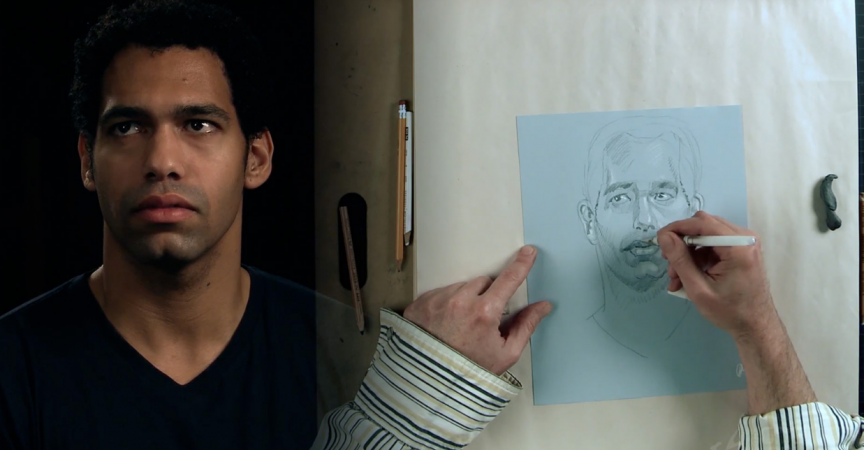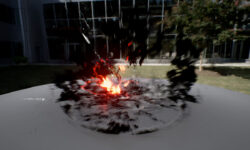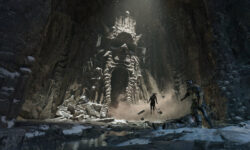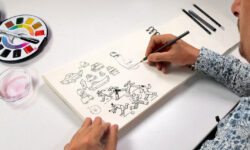Figure Fundamentals. Volume 1-4
Release date:2021
Author:Van Arno
Skill level:Beginner
Language:English
Exercise files:Yes
FIGURE FUNDAMENTALS VOLUME 1
Drawing the human figure is a pivotal skill for artists in a range of fields. Story boarding, concept art, illustration, and animation portfolios rise and fall on anatomical dynamics. Artists of all levels of ability draw the figure to engage the part of our brain that revels in dramatic tension. Often our efforts to draw accurately, however, are undercut by our preconceived ideas about how things should look in a “good drawing” as well as our fear of drawing poorly. A strong foundation in fundamentals allows us to quickly see the pose in its entirety. In this demonstration and lecture we will be conscious of the proportion and gesture of the figure from the first stroke of the pencil. Other topics include anatomy, drawing methodology, foreshortening, light and shadow. This is a boot camp for beginners while also a valuable refresher for experienced artists looking for new perspectives from an accomplished artist. Van Arno is known for the powerful dynamics of his figurative work and this title kick starts his figure drawing series.
FIGURE FUNDAMENTALS VOLUME 2
Van Arno’s series on drawing the human figure continues in Volume Two with discussions on drawing a male model. The anatomical differences from the female are noted. Poses of action and contortion then lead to a discussion of volumes in three dimensions. Van demonstrates how, with longer poses, the model can be drawn with simple volumes and then redrawn from another angle, without the model present. This exercise develops volumetric vocabulary and the ability to draw accurately, and in perspective, without pose reference. This is a vital skill for production and storyboard artists, where the angle of view is determined by a script or a director. Tone and light then are discussed in a final long pose. This figure drawing bootcamp is a valuable lesson for all aspiring figurative artists as Van Arno shares his thoughts and techniques acquired over an accomplished career as an industry and gallery artist.
FIGURE FUNDAMENTALS VOLUME 3
Head drawing is tricky for both beginning and experienced figurative artists. This is because we have preconceived notions about how features should look, and this undermines our ability to let observation of the model drive our composition. As in all figure drawing, striving to make things look how we think they should look interferes with our ability to draw what we see. This difficulty is multiplied when we draw the head due to our many misconceptions about its structure. In this lecture, Van Arno focuses on head proportions and the understanding that the cranium and jaw respond differently in perspective. This allows us to render accurately at progressively more ambitious angles. Van then expands this knowledge with short poses of facial expressions and longer poses that focus on tone and likeness. As usual, students are encouraged to draw along with the instructor to solidify the concepts discussed.
FIGURE FUNDAMENTALS VOLUME 4
Drawing the head can be the most challenging aspect of figure drawing. In this tutorial, Van Arno addresses common mistakes and provides tips to keep features in proportion. He demonstrates two methods of tackling facial symmetry in perspective, and works up to long poses using each of these methods. Along the way, Van also executes some quick poses of extreme facial expression. Successful head drawing is a great confidence builder for developing artists. Once competence in lighting and perspective are acquired, other issues of figure drawing are more easily addressed. Topics include male vs female proportions, facial construction from simple to detailed, the planes of the face, volume and perspective, light and shadow.





 Channel
Channel






Do you guys have artwod painting and drawing course?
https://artwod.com/online-drawing-courses/
Do u guys have this course
https://artwod.com/online-drawing-courses/